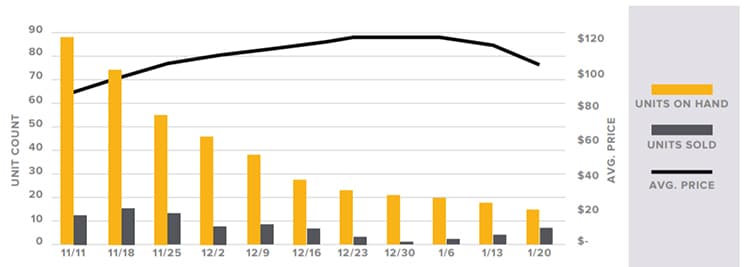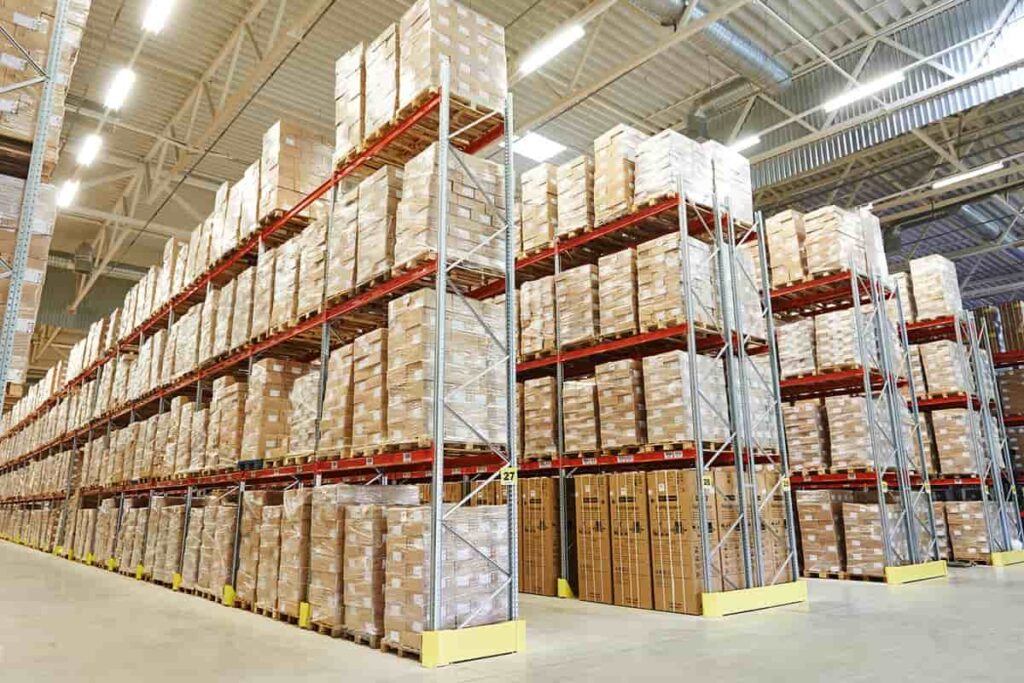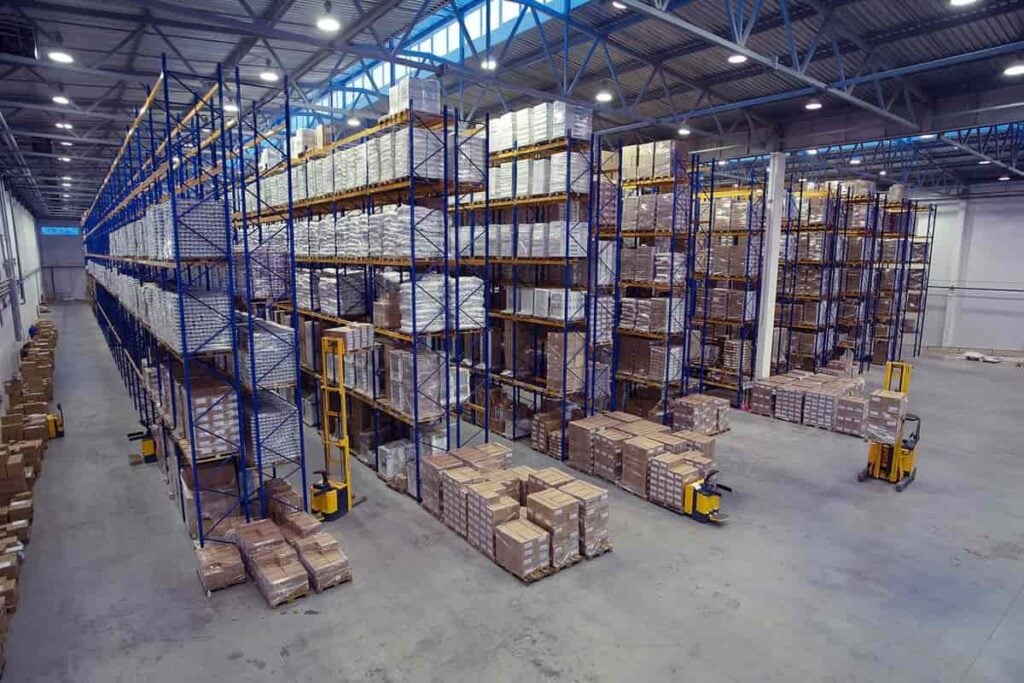Reverse Logistics Company Uses AI to Find Value in Retail
Table of contents

While “Retail Apocalypse” would no doubt make a great sequel to the iconic movie “Apocalypse Now” – with Martin Sheen reprising his role as Capt. Willard, trying to navigate his way through the dangerous modern day Mekong of the American mall – the term actually refers to the collapse of brick-and-mortar stores. More than 100 retailer chains, including iconic names like Sears and JC Penney, have filed for bankruptcy since 2015.

While most fingers point at Amazon (AMZN) as the primary culprit behind the destruction of the American strip mall Main Street America, the retail apocalypse is another example of evolve or die. Margins are tight, so companies looking to survive are searching for ways to eke out value anywhere along the supply chain. One emerging avenue is through something called reverse logistics.
What is the Cost of Reverse Logistics?
One definition of reverse logistics is that it covers everything that happens to a widget after the sale. In most cases, it simply refers to the processing of returned items, from ugly Christmas sweaters to that cubic zirconia diamond engagement after you caught your future bride-to-be with your ex-best friend. In other words, the reverse of buying is returning, and it applies in both traditional retail and e-commerce. There’s even a Reverse Logistics Association (who knew?) that represents this sector of the industry supply chain.

Returns cost retailers $428 billion in 2020 alone, representing more than 10% of all U.S. retail sales, according to the National Retail Federation. The problem is even bigger for e-commerce where online returns more than doubled last year from 2019 – about 18%, or $102 billion, was sent back out of the $565 billion of stuff purchased online in 2020.

Of course, there are other knock-on effects of returned merchandise, such as the loss of state sales tax and more worthless crap ending up in landfills. And those costs don’t account for the reverse logistics machinery required to process, manage, and dispense all of that unwanted stuff back into the supply channel in some form or fashion.
Sounds like a problem in need of automation through machine-learning algorithms. Let’s talk about Optoro and its SmartDisposition technology.
Reverse Logistics Using AI
Founded in 2010, the Washington D.C.-based startup has raised $244.4 million, which doesn’t include an undisclosed investment by a small, artisanal Swedish meatball maker called IKEA. The international retailer also announced in December 2019 a partnership to implement Optoro’s returns optimization technology in 10 IKEA distribution centers, 50 retail stores, and the Customer Support Center in the United States. Other noteworthy investor names attached to Optoro include venture capital firms Kleiner Perkins and Revolution (the latter has participated in eight rounds, if you include its growth-stage arm), investment firm and DGI darling Franklin Templeton (BEN), and the United Parcel Service (UPS), among others.
So, what kind of reverse logistics platform can you build with a quarter of a billion dollars?
Optoro’s SmartDisposition platform “leverages machine learning alongside customizable business logic to understand demand for each returned unit and route it to its most profitable channel.” In other words, the algorithms figure out if the item can just be re-shelved or shuffled off to an off-price retailer (the sort of place where Quasimodo might shop for swimwear). The widget could also land on Amazon or eBay, as well as Optoro’s own eCommerce land for misfit toys called BULQ, which features merchandise from companies like Groupon and Target. Another option is a tax-deductible thrift store donation.

A key component of the system is the company’s Dynamic Pricing Engine, which “uses key data inputs, alongside client-specific business goals to estimate SKU-level demand curves, price elasticities, and optimal market pricing.” The dynamic pricing algorithms reportedly analyze daily sales on every item, then alter unit-level remarketing prices based on actual market demand. It looks something like this:

Optoro partnered with a San Francisco-based startup last year on the customer-facing end of the returns platform. Founded in 2014, Returnly has raised about $30 million in funding to date to develop tech focused on reverse logistics for eCommerce customers. The platform also employs machine-learning algorithms to make real-time returns policy decisions, which the company claims saves its clients money on expenses associated with reverse logistics while building customer loyalty at the same time. Proprietary shopper data, product type, return score, return value, shipping variables, and the merchant’s own business rules feed into Returnly’s algorithm.
Use Cases for Optoro’s Reverse Logistics Solutions
The real question, of course, is whether Optoro is returning value on returning merchandise. Let’s look at some use cases.
An undisclosed online marketplace for home remodeling and design employed Optoro to automate eCommerce returns, routing goods directly from customers to Optoro’s B2B BULQ marketplace (a B2C version called BLINQ appears to be defunct, even though it’s still mentioned on the website). Optoro says more than 91% of the retailer’s returns have been resold via Optoro’s proprietary resale channels, and the program has increased net recovery (versus cost) by more than 150%. Further tweaks to the partnership over time have seen the exception rate for returns drop by more than 55%. The net recovery rate for the program also increased by 25% from year one to year two.
Optoro also has partnerships with companies like eBay and Groupon. For example, the former program is called BULQ on eBay, which allows sellers to purchase and resell liquidation lots on the eBay marketplace. Once the lot is purchased, sellers pull product information from the lots and create individual listings to edit, review and publish directly to their eBay store. Groupon has been a partner for about five years, with Optoro handling the reverse logistics at the company’s Groupon Goods business, which generates about $1 billion in annual sales.
There’s also an environmental angle to all of this that should please ESG-type investors. For instance, Optoro claims its technology helped clients keep 96% of returned and excess inventory out of landfills in 2020:

IKEA, in particular, is all about projecting a do-gooder corporate persona. In 2019, for example, the retailer resold 38 million products through its As-Is specialty shop, with a goal of being fully “circular” by 3030 – meaning nothing goes to waste. Optoro figures to play an outsized role, such as routing more than 3,000 lbs of products from four IKEA stores to Goodwill in 2020. The program is expected to include all 50 U.S. IKEA mega-churches of retail in the future.
Conclusion
We first profiled Optoro almost exactly two years ago in our article about inventory management systems, and the company seems to have created one of the leading solutions for reverse logistics since then. Other customers include Best Buy, Staples, and Bed Bath & Beyond, among others. It appears to be a solid business model on the surface, though we wonder how the potential softening of consumerism in the United States could affect the long-term health of this model.

Millennials are more interested in avocado toast than acquiring stuff to fill high-rent apartments that they share with three other people. The pandemic helped further unleash workers from their offices, allowing many to be mobile and work in Mumbai if they want. The retail apocalypse may not entirely be Amazon’s fault, as we (anecdotally at least) see something of a shift in consumption that no longer supports the Sears Roebuck catalog of yesteryear. However, the $12.5 trillion Americans spent in 2020 (down $500 billion from the year before because of you-know-what) on durable and nondurable goods and services will only tick up, if only due to population growth. But how those dollars are spent is changing, and we’ll see if Optoro’s algorithms can keep up.
Sign up to our newsletter to get more of our great research delivered straight to your inbox!
Nanalyze Weekly includes useful insights written by our team of underpaid MBAs, research on new disruptive technology stocks flying under the radar, and summaries of our recent research. Always 100% free.
















